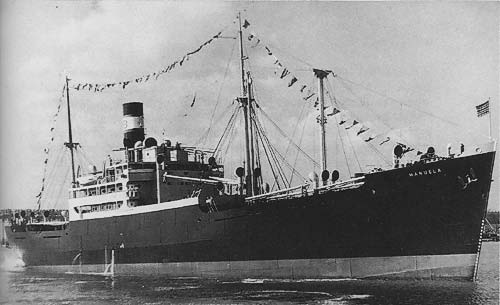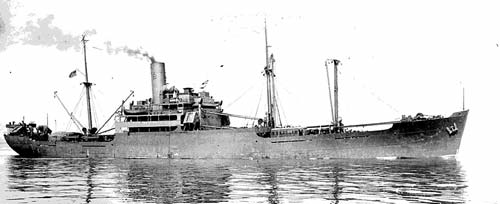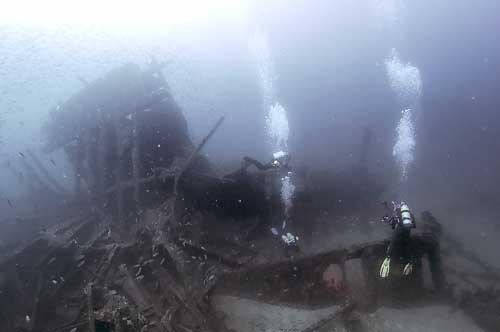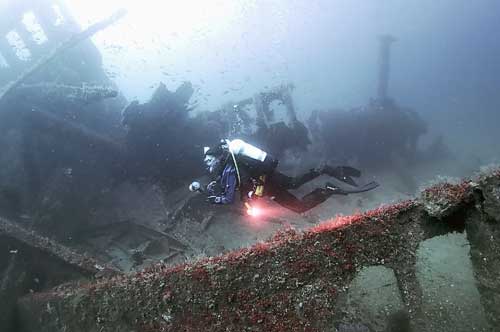Home Port: New York, NY

Torpedoed by U-404 (Gentile)
In an interesting footnote, the final resting places of the Manuela and the deeper but nearby Malchace were switched (it was thought that the Manuela was the deeper site) until Gary Gentile recovered the bell of the Manuela at the location we know today.


Manuela in peace and wartime colors - note gun platform on stern in lower photo
Visibility: Generally very good; range 50 to 100+ ft.
Current: Slight to strong
Summer Temperature: high 70s to mid 80s but can be subject to thermoclines on the bottom
Points of Interest: Largely intact bow, intact stern and midsections; propeller, port anchor, anchor windlass, large debris field
Fish/Animal Life: Usual array of NC marine life with an occasional sea turtle and large groupers
Description: The Manuela is one of the most visually spectacular wrecks off the NC coast. The depth has protected much of the large pieces of wreckage from the battering that can occur in shallower waters. The wreck is lying on it starboard side and is broken into three main sections which provide large junks of relief - the bow, large hull section amidships, and stern. These sections have small to large gaps bet ween them and are not in a straightline. The debris field is a large half circular area which lies inside of these intact sections. Even the flat hull and structural pieces have large dimensions to them making navigation on the wreck at this depth not something to be taken casually. When you get it on a day with low current and clear viz the wreck site is breathtaking.
The bow is intact, lying on its starboard side, approximately half of the bow buried in the sand. The anchor windlass and port side anchor are visible. The stern is also over on its starboard side with the rudder partially buried and a couple of propeller blades sticking up from the wreckage. In the middle sits what a large hull section, also lying on its starboard side, with a debris field spilling in front. The remains of the engine and condensers are evident at the stern end of this hull section. Between the stern and this section are the remains of the shaft alley. At the bow end of the middle hull section are large flat bulkheads and hull plates which eventually lead to the bow. The bow sits about 45-60 degrees to the line of the middle hull section.

Divers explore the stern section


The wreck pieces are large - ventilator shaft remains
Diver swims towards over a debris field amidships - middle hull in background


Diver inspects bow deck with port anchor below his fins
Group of divers make their way along the large middle hull section

Diver swims over the rudder/steerage assembly at the stern


Two blades of the propeller at stern
Remains of shaft alley coming out of stern


Wreckage atop the cabin area
Remains of crew cabin area


One of the engine condensers
Diver swims over collapsed hull plates

The deck of stern - collapsed on its starboard side


Curve of the bow & port side anchor
Same view as L, but from the deck side

Diver swims to the stern

Sea fans and soft corals on the end of the condensor

